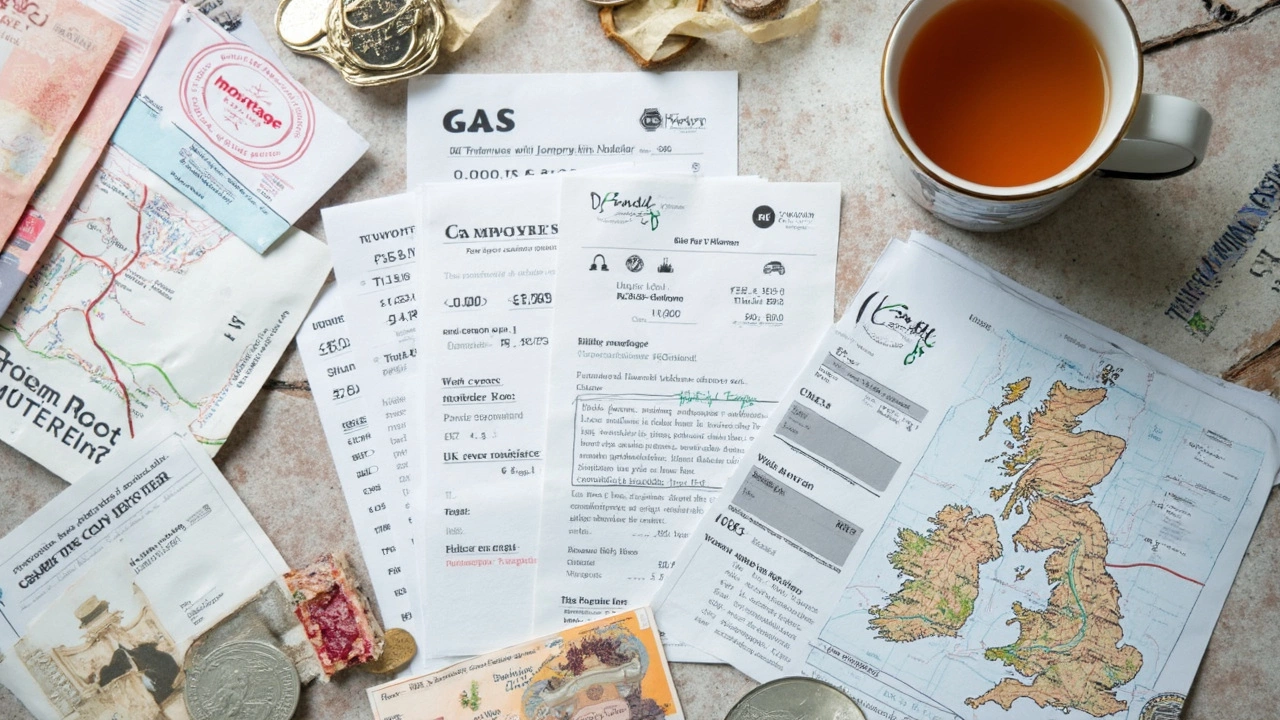To some people, selling the house, tossing the keys, and rolling off in an RV sounds like a money-saving dream. Get rid of that mortgage, cut your bills, and live anywhere you want – who wouldn't go for it? But does it really work out that way? I get asked this all the time, and the answer isn’t as clear-cut as you might hope. Let’s put the RV vs house debate under the microscope and see if the ‘cheaper’ tag really holds up.
The Real Costs of Living in an RV
So, you’re eyeing an RV for the big escape – but what exactly does your wallet face once you make the leap? First off, there’s the RV itself. Buying new? Plan to shell out anywhere from €60,000 to well over €150,000 for a decent rig that won’t feel like a tin can on wheels. Now, you can nab something used for less, but even solid used models usually run from €20,000 to €80,000 unless you’re okay with a fixer-upper that’ll eat into your savings later. And that’s just the start. Financing an RV generally means higher interest rates than a mortgage, so if you’re not buying outright, be ready for steeper monthly payments. Then comes insurance, which isn’t as simple as car insurance—full-time RVers spend an average of €1,200 to €3,000 per year on comprehensive policies since their rig is both home and vehicle. Maintenance is another wallet-kicker; tires, roof reseals, engine service, and the inevitable repairs will add up. Smart RVers set aside at least €100–€200 monthly for just-in-case fixes, but repairs like replacing a transmission or fridge can run €2,000–€4,000 in a snap.
Every night, you need somewhere to park. Unless you’re boondocking (free camping, which isn’t always possible outside the wilds of North America), most sites charge €25–€60 a night in high season or €700–€1,200 for a decent monthly hookup. That number jumps if you want fancier resorts with pools and Wi-Fi. Utilities are partly included at campgrounds, but propane for heating or cooking and generator fuel are extra. If you plan on traveling a lot, budget for fuel. RVs range from 7 to 14 miles a gallon; at European diesel prices, you could burn through €400–€800 a month if you’re covering distance. Cellular data, streaming, and satellite TV are vital for most RVers; depending on your needs, expect €50–€200 monthly just for decent connectivity. Don’t forget laundry, mail forwarding, and those ‘unexpected’ expenses like new batteries or a leaky water tank. Put all the basics together, and regular RV living can total €1,200–€2,800 per month excluding the cost of the RV itself—living extra-frugal or spending lavishly swings the final bill either way. Are there people who do it for less? Sure—if they mostly boondock, stick in one region, and hack down every extra. But most full-time RVers don’t spend less than €1,000–€1,500 a month, especially in Europe where wild camping is restricted.
Owning and Maintaining a House: Plain Old Predictability?
Owning a house comes with its own version of "predictable" costs, but it’s a different beast. The biggies are mortgage payments, property taxes, insurance, utilities, and good old maintenance. In Ireland, the average monthly mortgage hovers around €1,300, depending on where you plant your roots, but go near Dublin and that can spike to €2,200 or more. Toss in property tax—say, €300–€600 yearly for most homes—a building insurance policy for €250–€600, and utilities like electricity, gas, water, bins, and broadband; most Irish families cough up about €250–€400 a month in all. Then there’s the annual repairs—think roof fixes, new pipes, paint jobs, and the lawnmower that always breaks when you need it most. A good rule is to save 1% of your home’s value each year for maintenance, so on a €250,000 house, plan for €2,500 tucked aside, even if you don’t use it every year.
But it’s not just about what you pay—it’s about what you get back. Over time, homeowners can build property equity, which may pay off in the long run (though none of it counts until you sell or borrow against it). Utility bills rise, but you’re not moving around, so you settle into routines and local rates. Homes also mean council-fee slips, license fees for your TV, and local charges—those pesky, unavoidable bills that land on every kitchen table. Living in a house can actually be cheaper for families who need space, cook at home, and aren’t paying top dollar for shiny amenities. But, for all its predictability, a house brings a fixed location. That’s security for some, but for others, it’s just another anchor.

Comparing Monthly Budgets: Where the Euro Really Goes
So when you slap the figures side by side, how do things look? Here’s a peek at average monthly costs for one or two people living in Ireland’s cities vs. out of an RV across Europe:
| Expense | House (Dublin, avg) | RV (Europe, avg) |
|---|---|---|
| Housing/Mortgage/Finance | €1,500 | €400 (if financed) |
| Insurance | €50 | €150 |
| Utilities | €275 | €100 |
| Maintenance/Repairs | €200 | €150 |
| Internet/Data | €50 | €80 |
| Site Fees/Parking | — | €600 |
| Fuel/Commuting | €150 | €300 |
| Average Total | €2,225 | €1,780 |
This is just a ballpark, and the "financed RV payment" assumes a typical five-year finance on a €25,000 used rig. Push for luxury class or more frequent moves, and your RV costs shoot up. Stay parked in cheaper countries for months, and your costs drop. But, right now, regular folks spend between €1,200–€2,000 a month to maintain (not just own) their RV life, and the same can be said in many parts of Irish towns. With a house in Dublin? The cost of living often bites harder and doesn’t give you the travel flexibility.
What You Save, and What Gets Traded Away
Here’s the sneaky bit: RV living gives you big savings compared to traditional city real estate, but only if you’re ready to give up a home’s space, stability, and some creature comforts. Groceries, eating out, and health insurance usually stay about the same, so RVing doesn’t shrink your entire budget—just the housing and commuting chunks. If you can handle smaller living, washing up at camp showers, and fixing your own water heater at 2 a.m., you’ll bank hundreds monthly. But if you keep up the city pace—stream in 4K, eat in restaurants, and constantly drive—those savings vanish quickly.
RV life also means paying more for things like health coverage or mail services if you travel country to country. And, nothing torpedoes a budget quite like a major RV breakdown on the autobahn—tow bills and out-of-country repairs cost a fortune. There’s no return on investment in the classic sense: an RV drops value fast, while a house gains (usually). At the same time, RVers dodge property tax, garden chores, neighbor drama, and certain local charges. It’s a choose-your-own-adventure: slice off fixed bills and put up with more unpredictability, or swap some flexibility for steady monthly costs.
One of the biggest things missed by would-be RVers is the impact on family and social life. Want to host a dozen mates for the rugby or throw a barbecue? Good luck with that in ten square meters. Need a stable school for kids or a GP down the street? RV living isn’t great for families who need roots. Retirees and solo wanderers? The trade-off can be worth it, but for anyone who thrives on routine community, a house stays cheaper in more than just cash terms.

Tips to Cut Costs and Make RV Living Work
If you’re still itching for RV life but want to keep it cheap, you’ve got options. Here’s what I’ve learned from folks doing it right (and wrong):
- Buy used and well-reviewed – the shiny new RVs lose value fast, but a trusted used model often costs half as much and has proven mileage.
- Plan slow travels – staying in one spot for a month means snagging discounts; bouncing all over Europe chews up fuel and site fees.
- Boondock where it’s allowed – in certain rural parts, especially off-season, you can wild camp for free, but mind local laws (Ireland and most of Europe get strict near cities and coastlines).
- DIY repairs – learn some basics and you'll save big. YouTube is packed with guides for every RV fix under the sun.
- Downsize your gear – the less you carry, the less you’ll break and the less weight you lug, which saves on fuel as well.
- Batch errands and plan routes smartly – combine shopping and sightseeing to save miles (and money).
- Ask RV parks about work trades – watch after the camp for a few hours and often your pitch is free.
- Keep digital connections lean – multi-SIM routers and local prepaid data deals cut costs in half versus standard roaming packages.
- Watch for surprise heating costs in winter – insulation upgrades pay off quickly if you stick around through colder months.
- Make use of loyalty cards and clubs (like the Camping and Caravanning Club) for deals on sites across Europe.
At the same time, don’t forget hidden moving costs – registration, tolls, exchange rates, emergency repairs. And factor in that not every country is equally RV-friendly; in some regions, you’ll pay higher site fees because options are limited. Everything takes more planning than clicking on the kettle in your kitchen back home. If constant change sounds exciting – and a bit of hassle won’t scare you off – then RV life really can be cheaper. For others? A simple house, even with bigger bills, sometimes means sleeping easier.
